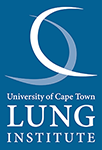
No hot air: nothing stops the spread of Covid-19 quite like fresh air
12th April 2021
XACT III: A trial asking how to take TB tests to the people
29th April 2021spotlight – 14th April 2021 | Tiyese Jeranji
After various delays and setbacks, new, less toxic, short-course tuberculosis (TB) prevention therapy is finally being launched in six districts in South Africa – with training of healthcare workers already underway.
The new three-month treatment course, called 3HP, will initially only be provided to eligible people at risk of TB in the Oliver Tambo District in the Eastern Cape, Johannesburg, and Ekurhuleni in Gauteng, eThekwini in KwaZulu-Natal, Ehlanzeni in Mpumalanga and Cape Town in the Western Cape. The phased rollout will be scaled up to include a total of 23 districts before the end of 2022.
Related Posts
- COVID-19: How vaccine registration will work in SA
- High price delays introduction of new TB prevention therapy
- In-depth: SA at cutting edge of TB vaccine research
- New TB testing strategy ups diagnosis in clinics by 17%
- New dawn in TB prevention therapy
- Opinion: Engage communities and leverage COVID-19 innovations to address SA’s TB crisis
- SA piloting mobile X-rays to improve TB detection
- Support for some TB patients just a phone call away
- XACT III: A trial asking how to take TB tests to the people
While South Africa has done better than most countries in recent years in providing TB preventive therapy, the country continues to have some of the highest TB rates in the world. This is something it is hoped 3HP could help address.
Stepping up TB control
Professor Keertan Dheda, a pulmonologist and a critical care specialist who heads up the Division of Pulmonology at Groote Schuur Hospital and the University of Cape Town, says there are many aspects to improving TB control in South Africa including reducing poverty, reducing the burden of and treatment of HIV, and improved access to modern TB diagnostics, and newer drugs. “The Department of Health must be commended [for] delivering on many of these,” he says.
“An additional aspect of TB control is to treat the sleeping form of TB (also called latent TB infection),” he says. “Persons that have the sleeping form of TB have no symptoms and their X-rays do not show any evidence of active TB. However, this form of TB can later transform into active TB making people ill and the bug can also be transmitted to other people at that stage. TB preventative therapy thus prevents TB months to years down the line and contributes to [the] overall control of TB.”

He says it will be difficult to eradicate TB without using TB preventative therapy, as there will always be cases that will later pop up, amplifying disease spread and burden.
Professor Gavin Churchyard, founder and Chief Executive Officer of the Aurum Institute (an NGO), agrees, saying that treatment of latent TB infection is critical to prevent progression from latent infection to disease and has been recommended for the past 23 years but its uptake has been sub-optimal and where treatment was initiated, completion rates were poor because of the long duration of treatment.
Traditionally TB preventive therapy involves taking the drug isoniazid every day for anything from six to 36 months – often referred to as IPT, (isoniazid preventive therapy).
A new and better alternative
But a number of new, short course alternatives have been shown to work equally well and to have the benefit of higher treatment completion rates in recent years. Most prominent among these is 3HP, the regimen now being phased in in South Africa. 3HP combines two TB drugs – isoniazid (H) and rifapentine (P) taken once a week for three months (which is where the 3 in 3HP comes from).
Churchyard says that compared to IPT, the 3HP regimen has clear advantages. This includes the shorter course, once-weekly dosing, and equal or less frequent adverse events.
Dr Lindiwe Mvusi, Director of the TB Control and Management Cluster in the National Department of Health, agrees. “It has fewer side effects than Isoniazid, better treatment adherence, and treatment completion,” she says, adding that shorter regimens like 3HP generally also have a lower risk of liver toxicity than isoniazid taken for six or 12 months.
Delays and setbacks
As previously reported in Spotlight, one reason 3HP has not been rolled out earlier in South Africa is the price of the pills, which is substantially higher than isoniazid alone. Some price reductions have however been secured in recent years. South Africa is purchasing rifapentine for $17 (around R250) per treatment course from the pharmaceutical company Sanofi – slightly lower prices have been negotiated elsewhere. The $17 price excludes the cost of isoniazid and pyridoxine (used to prevent peripheral neuropathy which can develop as a side effect of taking isoniazid). For now, Sanofi has the only registered rifapentine product in South Africa.

Mike Frick, TB Co-Director at Treatment Action Group (TAG, a New York-based NGO), says price negotiations substantially improved the affordability of 3HP, but they should not be taken as the final price floor.
“Ensuring all people at risk of TB can access rifapentine-based TB preventive therapy will require further reducing the price of rifapentine. The expected entry of additional generic manufacturers of rifapentine should put some downward pressure on price through competition and increased supply. But governments should not leave affordability to the market alone,” he says.
“We know that under the right conditions rifapentine manufacturers can go lower than $15 for a course of 3HP. Governments have created these conditions by investing in 3HP scale-up, and communities have paved the way by building demand for TB prevention services. Now it’s time to achieve further price reductions for rifapentine so that the 3HP regimen becomes affordable for everyone at a price government can sustain over the long term. This advocacy has become even more important in the face of COVID-19,” he says.
But price was not the only delaying factor.
Mvusi points out that the COVID-19 pandemic and associated lockdowns around the world impacted the production and delivery of rifapentine to South Africa. “Rifapentine is produced by one supplier, Sanofi, in a factory in Italy. The production capacity is limited to 1.2 million annually. The lockdown affected the monthly deliveries as agreed upon in our demand plan,” she says.

Sanofi also faced production problems when impurities were found in their rifapentine pills. “Sanofi reported unacceptable levels of nitrosamine impurities in the rifapentine tablets around July 2020,” says Mvusi. “Since the nitrosamines at high levels are potential carcinogens, the regulatory processes had to be followed to ensure that the product is safe for use.”
This process, she says, took longer than expected and clearance of all stock already in the country was only obtained in January 2021. She tells Spotlight that based on the lockdowns lifted, and clearance of the rifapentine product in the country, as well as the adjusted nitrosamine levels at manufacturing and shelf life, manufacturing has resumed, and a new commitment to supply South Africa with rifapentine is in place.
Yet, even though the rollout of 3HP in South Africa will now start, supply from Sanofi remains constrained – which is why the initial rollout is restricted to six districts. Spotlight understands that there are 600 000 packs available from Sanofi, which is enough for around 200 000 patients. Accordingly, the first phase target is to reach 193 982 eligible people.
Who is eligible for 3HP?
WHO guidance recommends TB preventive treatment for people living with HIV, household contacts of bacteriologically confirmed pulmonary TB cases, and clinical risk groups (e.g. those receiving dialysis).
Churchyard explains that in South Africa it is mainly people living with HIV and household contacts of people with active TB who are eligible. He says no tests will be required before starting 3HP. “People living with HIV are all eligible. For household contacts, there is an index case of latent TB infection, therefore we do not require a test. WHO global guidance also does not recommend tests before TB preventive therapy, only symptom screening. Imposing testing will hamper the rollout of 3HP. If testing is available, clinicians can use it, but it is not required.”
According to Churchyard, the side effects of 3HP are uncommon and most people take TB prevention medicines without any problems. “Some patients using 3HP experience flu-like or other systemic drug reactions, with fever, headache, dizziness, nausea, muscle and bone pain, rash, itching, red eyes, or other symptoms. Clinicians should educate patients about possible adverse effects and instruct them to stop taking their medicine and to seek medical attention when signs and symptoms of adverse events first appear,” he says.
When asked whether people will be given a three-month supply to take home, or if they will have to come back every month, Mvusi says dispensing will be aligned to the modalities of care that implementing districts are using to reduce patients in healthcare facilities to limit the spread of COVID-19.
“The dispensing method will also be influenced by the supply of rifapentine allocated to the district based on the projected eligibility numbers for TB preventive therapy,” says Mvusi. “For example, some districts may issue three months at the first initiation, aligning to the multi-month dispensing program (MMD). They will give 3HP full three months (or six months isoniazid for Household contacts), some might align to the MMD programme, some may issue the first month’s course, and align subsequent months to the MMD strategy used in the facilities. There are discussions to add 3HP into the provincial drug formularies so that it can be dispensed through Central Chronic Medicine Dispensing and Distribution (CCMDD). The feasibility of that is still being explored.”
Mvusi also says that there will be a need to invest in remote pharmacovigilance and adherence support, considering the multi-month dispensing strategies under consideration.



